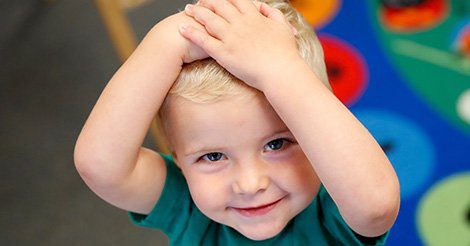Body Parts Head to Toe
Preschool children should be learning to identify and name all their major body parts. Try some of the following activities to support this science skill at home.
Make a game out of naming various body parts and having your child point to them. Name both simple and a few more complex anatomy terms, including head, arm, leg, hand, foot, eye, ear, nose, mouth, face, teeth, and stomach/tummy.
Sing fun songs about the body, such as “Head, Shoulders, Knees, and Toes” and the “Hokey Pokey.”
Read an age-appropriate children’s book on the body. Consider checking out Here Are My Hands by Bill Martin Jr. and John Archambault, Me and My Amazing Body by Joan Sweeney, From Head to Toe by Eric Carle, or Toes, Ears, & Nose! by Marion Dane Bauer. It can be so much fun to learn about how the body works!
Age-appropriate Adaptations:
- Two-year-olds—Sing interactive songs about the body, such as “Head, Shoulders, Knees, and Toes” and the “Hokey Pokey.” Then, read a fun children’s book about the body. Consider checking out Here Are My Hands by Bill Martin Jr. and John Archambault, Me and My Amazing Body by Joan Sweeney, From Head to Toe by Eric Carle, or Toes, Ears, & Nose! by Marion Dane Bauer.
- Three-year-olds—Make a game out of naming various body parts and having your child point to them. Name both simple and a few more complex anatomy terms, including: head, arm, leg, hand, foot, eye, ear, nose, mouth, face, teeth, stomach/tummy, shoulder, chest, chin, forehead, cheek, toe, finger, thumb, knee, elbow, and wrist.
- Four-/Five-year-olds—Many Kindergarten readiness assessments and/or entrance exams test on this vocabulary. Your child may already be able to name all his major body parts, but can he tell you their unique purposes or functions? For example, see if your child can name the body part that digests food, pumps blood, or breathes in air. Talk with your child about how his bones provide the skeleton or frame for his body, how his skin protects his insides, and how his muscles help him move around. This will help deepen his understanding of how his body works!
Skills Supported: anatomy, gross motor skills (dancing)

